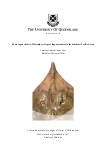Using satellite tagging and molecular techniques to improve the ecologically sustainable fisheries management of shortfin makos (lsurus oxyrinchus) in the Australasian region
- Description:
- This study used a multi-disciplinary approach to investigate the patterns of population structure, spatial connectivity, and contemporary effective population size of the shortfin mako (Isurus oxyrinchus). It represents the first comprehensive study of the connectivity of this Highly Migratory Species (HMS) species in the Southern Hemisphere. Listing of the shortfin mako under the Environmental Protection Biodiversity and Conservation Act (EPBC Act, 1999) in 2010 was debated by recreational/game fishers. This was followed by an amendment to allow that sector to continue to target shortfin makos. Points of contention included a perception that there was: 1) limited information available to assess links between shortfin mako populations in Australian waters and those in the Northern Hemisphere, and 2) limited information on the movement and mixing of shortfin makos that support Australian fisheries.
- Display date:
- 2015
- Collections:
- Secretariat of the Pacific Regional Environment Programme (SPREP)
- Publisher:
- Fisheries Research and Development Corporation, South Australian Research and Development Insitute
- Content partner:
- Secretariat of the Pacific Regional Environment Programme (SPREP)
- Availability:
- Not specified
-
Copyright status: All rights reservedFind out more about what you are able to do with this itemThis item is all rights reserved, with means you'll have to get permission from Secretariat of the Pacific Regional Environment Programme (SPREP) before using it. For more information, please see our use and reuse page.What can I do with this item?Non-infringing useNZ copyright law does not prevent every use of a copyright work, and this item may be hosted by an international institute or organisation. You should consider what you can and cannot do with a copyright work.No sharingYou may not copy and/or share this item with others without further permission. This includes posting it on your blog, using it in a presentation, or any other public use.No modifyingYou are not allowed to adapt or remix this item into any other works.No commercial useYou may not use this item commercially.
Related items
Welcome and warm Pasifik greetings
The information on this site has been gathered from our content partners.
The names, terms, and labels that we present on the site may contain images or voices of deceased persons and may also reflect the bias, norms, and perspective of the period of time in which they were created. We accept that these may not be appropriate today.
If you have any concerns or questions about an item, please contact us.
